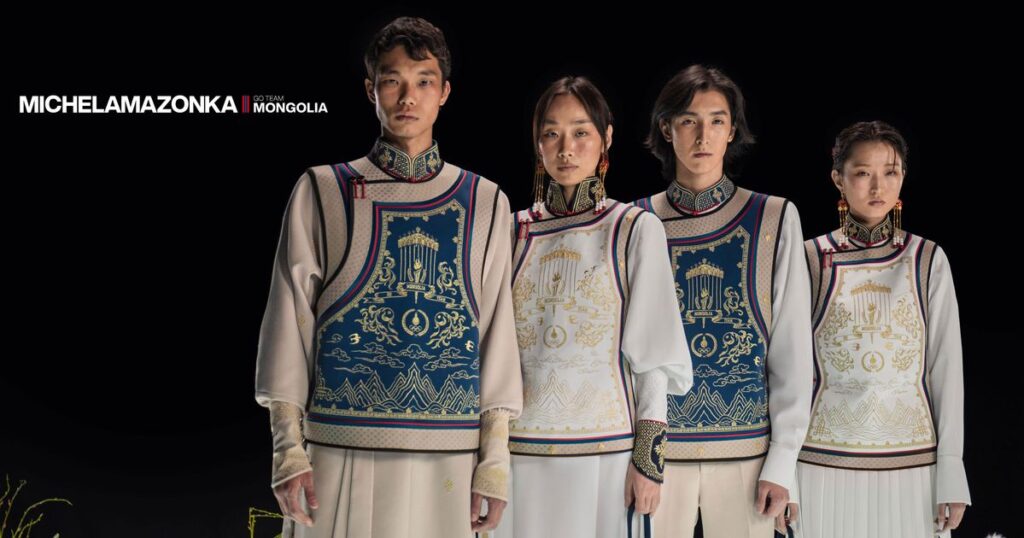The Internet is abuzz with excitement about how the Mongolian team will perform at the 2024 Paris Olympics.
Earlier this month, Mongolian haute couture brand Michel & Amazonka showed off the opening ceremony uniforms it created for the Mongolian national team on Instagram, causing a frenzy among social media users.
Nima Hibkenov / Michelle & Amazonca
“They won. They won before the Olympics even started,” said TikToker Ryan Yip, whose video about the costumes has garnered nearly half a million likes, praising the outfits.
“Tell me what was the motive? [Michel&Amazonka] “…and I can't believe that the entire Mongolian Olympic team can jump so powerfully,” Yip said. “I have to learn that magic.”
Nima Hibkenov / Michelle & Amazonca
Another TikTok user, who goes by the handle @regularguy_sports, also gave Team Mongolia high marks in his ranking of opening ceremony outfits.
“It seems like Mongolia is heading for war,” he said. “It seems like they're trying to take the souls of the people in this competition.”
Social media users of X (formerly Twitter) were similarly impressed.
Across multiple platforms, netizens have marveled at the uniforms' intricate embroidery, pleated robes and subtle tributes to Mongolian culture, including the blue and red colours of the national flag and a range of traditional patterns and motifs.
Nima Hibkenov / Michelle & Amazonca
One of these motifs is the Soyombo symbol that appears on the national flag, while other details on the garment include designs of the Eiffel Tower and the Olympic Torch, paying homage to the Paris Games themselves.
Each costume reportedly took an average of 20 hours to make.
Nima Hibkenov / Michelle & Amazonca
Michelle Choigaara and Amazonka Choigaara, the sister duo behind the brand “Michel&Amazonka,” told Forbes in 2019 that being Mongolian gives them a unique advantage in the fashion industry.
Nima Hibkenov / Michelle & Amazonca
“Right now in Mongolia you can find a lot of ideas from our traditions and culture because it is not well known in the world,” the siblings told the media.
“We know it well from historical figures like Genghis Khan and ancient history, but in modern times we can find a lot of ideas from the way people dress, the way they do things culturally, their rituals, etc.”

